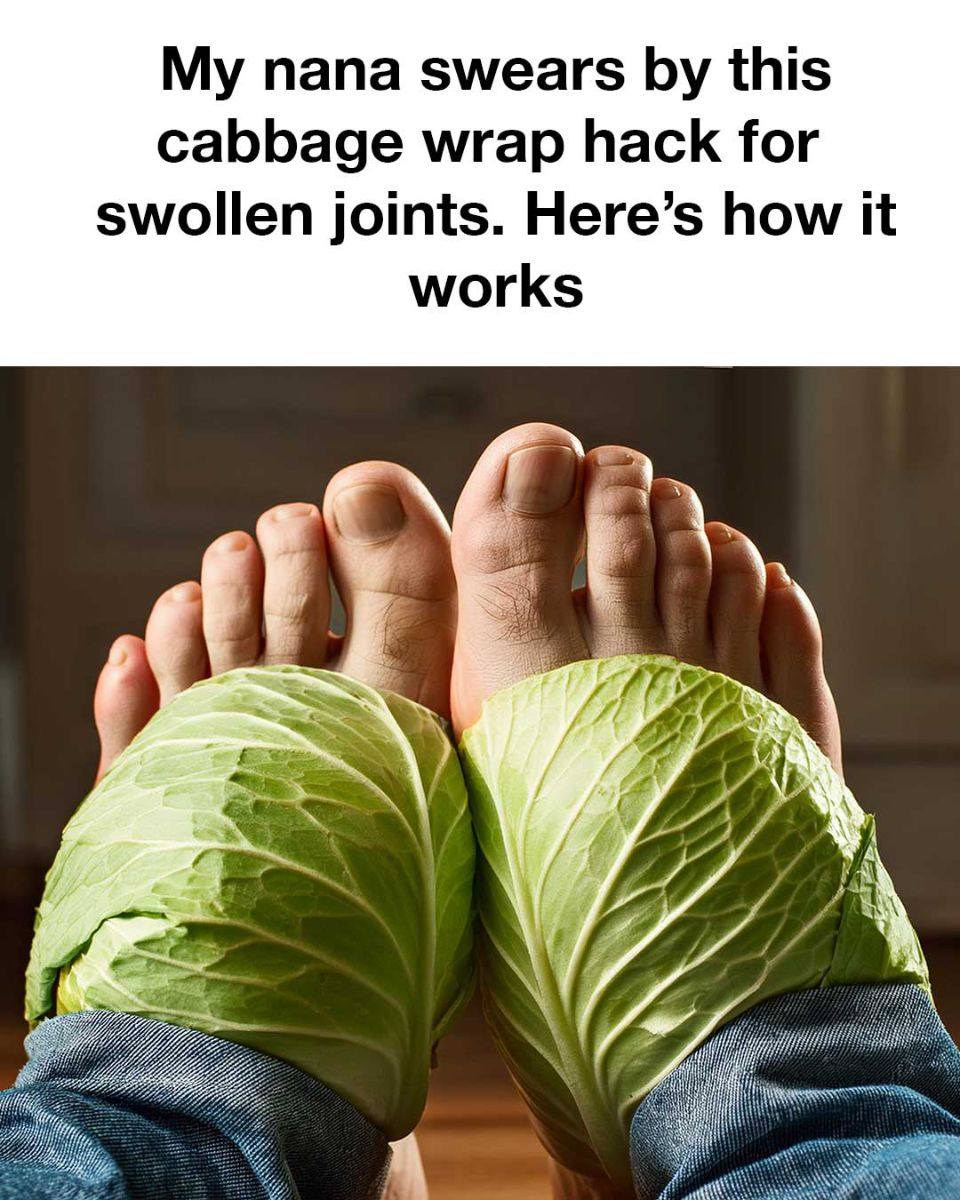- After that, she warms the leaves slightly. This can be done using a microwave for a few seconds or briefly dipping them in hot water.
- The warm, pliable cabbage leaves are then placed directly onto the swollen joint.
- She wraps the leaves snugly but comfortably with a bandage to keep them in place.
- Nana leaves the cabbage wrap on for about an hour, sometimes even overnight, depending on the severity of the swelling.
Why She Thinks It Works:
Nana attributes the effectiveness of cabbage wraps to several factors:
- Anti-inflammatory properties: Cabbage contains anthocyanins and glutamine, both of which have anti-inflammatory properties that can help reduce swelling.
- Cooling effect: When placed on swollen joints, cabbage leaves provide a cooling sensation that can temporarily ease pain and discomfort.
- Detoxifying agents: The leaves are believed to draw out excess fluids and toxins from the joints, which might help reduce swelling.
- Nutrient-rich: Cabbage is rich in vitamins and phytochemicals that promote overall health and potentially aid in joint healing.
- Moisture and warmth: The combination of moisture from the cabbage leaves and warmth helps in improving circulation to the affected area, promoting healing.
Throughout her life, Nana has found relief in these simple, age-old practices. While cabbage wraps may not replace professional medical advice or treatment, they serve as a soothing, complementary approach to managing joint pain. Whether you’re looking to explore natural remedies or simply curious about the practices of past generations, giving cabbage wraps a try might just offer the relief you’ve been seeking.
👇 To continue reading, scroll down and click Next 👇
ADVERTISEMENT

